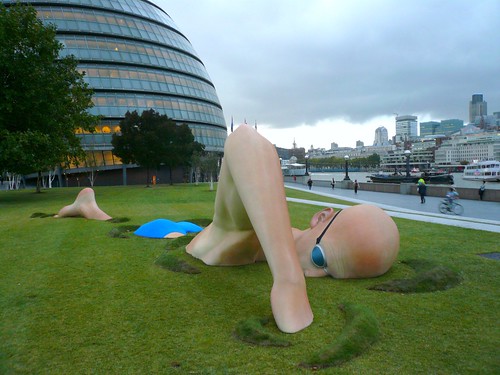By Maria Mortati
Recently, I was invited to participate on a panel in SF about creating engaging public spaces at the urban waterfront.
Yes, I know, the waterfront is already a draw– it's a giant confrontation between ourselves and the great unknown. In urban areas, however, it's pretty challenging to simply get to the water (on the east side of San Francisco that is particularly true), let alone engage with it.
Planning & Design
Dan Hodapp, Senior Waterfront Planner at the Port of San Francisco helped the audience understand how the Port looks at the watefront on a larger scale: the diversity of usages it needs to support, and the ways the city needs to meet it. This includes how far people must walk amongst access points, industry, and entertainment.
Challenging Design Environment
I talked about 'Impermanence as a Design Strategy' for creating engaging exhibits at the water's edge. It's hard to do permanent work there: environmental impact on maintenance, urban impact on exhibits, politics of civic art & design.
I based this on case studies of art; Ledia Carroll's project through Southern Exposure on tracing the edge of the built-over Mission Lake in SF, informal shared research; the Hidden Ecologies Project, and my work designing and building prototypes along the waterfront in SF for the Outdoor Exploratorium. What these things have in common is that they were/are fairly achievable on a variety of scales, and yet had a lot of impact.
Large Scale Public Involvement
Kate Bickert, Director of Trails Forever for the Golden Gate National Parks Conservancy talked about the involvement of the community in the redevelopment of Crissy Field. That was and is a fantastic, long-term model of civic engagement in a local resource.
Kate Bickert, Director of Trails Forever for the Golden Gate National Parks Conservancy talked about the involvement of the community in the redevelopment of Crissy Field. That was and is a fantastic, long-term model of civic engagement in a local resource.
She also showed discussed some cools projects such as the Learning Barge, being developed a the UVA School of Architecture:
"The Learning Barge will address this deficit as it traverses the highly polluted and urbanized Elizabeth River. The educational spaces and interactive exhibits will provide meaningful, hands-on education... The Learning Barge will serve residents of the Elizabeth River watershed and Hampton Roads population of 1.6 million. Over 19,000 formal and informal learners are anticipated each year, including K-12 students and teachers, diverse community groups, families, children, adults and elders of all backgrounds." -Learning Barge Web Site
BTW, there's also the Science Barge in Yonkers, NY. It's a floating sustainable demonstration garden that is a great draw for the waterfront and for informal science education.
Public Art at the Waterfront
Ned Kahn (do I have to tell you who he is?) shared his fascination with (and I should say mastery of) intersections between the built world and the nature of fluid dynamics.
It was beautiful.
Image: Lars Ploughman







No comments:
Post a Comment